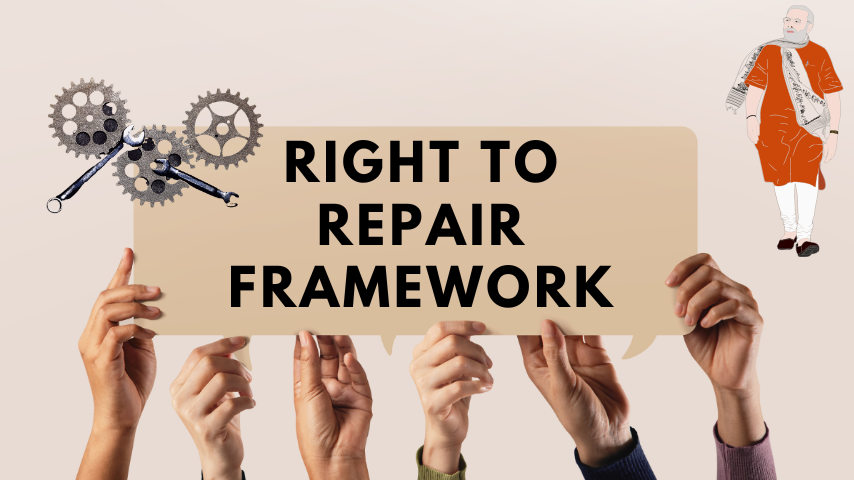Unlocking Consumer Power: Understanding the Right to Repair Framework

In a world driven by rapidly advancing technology, the concept of the Right to Repair has emerged as a powerful movement, empowering consumers to regain control over their devices. This framework, designed to break down barriers and restrictions imposed by manufacturers, aims to redefine the relationship between consumers and their products. In this article, we will delve into the significance of the Right to Repair framework, exploring its benefits, the sectors it covers, and its role in promoting sustainability.
Understanding the Right to Repair Framework:
The Right to Repair framework champions the idea that consumers should have the freedom to repair or service their devices without facing unnecessary obstacles or technical restrictions. It signifies a departure from the conventional approach of relying solely on manufacturers for repairs, opening up avenues for self-repair or third-party servicing. By embracing this framework, consumers gain the ability to choose more cost-effective repair options, rather than resorting to purchasing entirely new products.
Benefits to Consumers:
Embracing the Right to Repair framework brings numerous advantages for consumers. Firstly, it provides a more practical and accessible approach to fixing their devices, reducing the need for costly replacements. By accessing a range of repair services through this framework, including maintenance, replacement parts, and warranty information, consumers can make informed decisions and exercise greater control over their products. Additionally, the framework offers easy access to a consolidated list of authorized service providers, warranty details, and contact information, ensuring swift and efficient service for consumers.
Sectors Covered:
The Right to Repair framework extends its reach to various sectors, acknowledging the diverse range of consumer products that require repair or servicing. The initial focus of this framework includes farming equipment, mobile phones and tablets, consumer durables, and automobile equipment. By encompassing these sectors, the framework aims to address the repair needs of essential agricultural machinery, electronic devices, household appliances, and vehicles.
Promoting Sustainability:
One of the core tenets of the Right to Repair framework is its contribution to sustainability. By enabling consumers to repair and extend the lifespan of their devices, it helps reduce the staggering amount of electronic waste generated each year. Moreover, this framework encourages the growth of local repair shops, fostering a circular economy that promotes reuse, upgradeability, and responsible waste handling. By embracing repairability and reducing the cycle of constant consumption, the Right to Repair framework aligns with the goals of a more sustainable future.
The Right to Repair Portal:
To facilitate the implementation of the Right to Repair framework, the Department of Consumer Affairs has launched a dedicated portal. The portal acts as a single platform, providing easy access to necessary information on repair and maintenance of products for consumers. You can explore the portal at https://righttorepairindia.gov.in
Frequently Asked Questions (FAQ):
What is the Right to Repair Portal?
The Right to Repair Portal is a platform that allows consumers to access information related to repair and maintenance of products. It provides details on authorized service providers, warranty information, and product-specific guidance.
Does the Right to Repair Portal change the right to choose for consumers?
No, the Right to Repair Portal aims to empower consumers by providing them with information on repair options. It enables consumers to make informed decisions about their products and exercise their right to repair.
Can consumers check the genuineness of components through the portal?
Yes, the Right to Repair Portal displays the standards or hallmarking notified
Can the Right to Repair framework be applied to other sectors in the future?
While the current focus of the Right to Repair framework includes farming equipment, mobile phones and tablets, consumer durables, and automobile equipment, there is a possibility of expanding it to other sectors in the future. As technology evolves and new products emerge, policymakers may consider including additional sectors to ensure that consumers have the right to repair a wider range of products.
Remember, the Right to Repair framework is continuously evolving, and it is essential for consumers to stay informed about their rights and take advantage of the resources provided through the Right to Repair portal. By embracing this framework, consumers can contribute to a more sustainable future, exercise greater control over their devices, and make more informed choices about repairs and maintenance.






